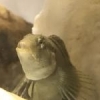Successful Native Fish Keeping isnt that hard, depending on the fish you keep. Theyre not always as colorful as tropical fish but many have interesting behavoirs that make them fun to watch. I hope the following tips help. Good Luck.
Start with regional fish that live in the same type of water that you have access to. By this I mean water of the same PH and hardness making for easy water changes and acclimation.
Collect fish during the cooler months to minimize heat-stress deaths to the fish (and you). Also quarantine your fish to prevent parasites or diseases spreading to your healthy fish. Avoiding problems is way easier than trying to cure them
Minnows, daces & killifish are good starter fish that are easier to feed and dont exclusively require live or frozen foods. I know everyone likes to keep pretty fish like darters and colorful sunfish, but darters will not eat pellets or flakes and with sunfish its hit-or-miss; some will eat them and some wont. As you become more experienced learn to raise your own live foods such as whiteworms, blackworms, daphnia, for these kinds of fish or feed them quality frozen foods.
Keeping predatory fish like bass, pickerels, bowfins etc. may be kool to keep for a while but they need a steady diet of live (expensive) foods to keep them healthy, plus they get really big.
Catfish, pirate perch, sculpins are nite feeders that will eat anything that fits in their mouth. Creek chubs will do the same any time of the day. Mosquito fish and sticklebacks are small, aggressive fish & though they may not eat tankmates they might bully them to death.
Avoid mixing species from different habitats i.e. still waters vs flowing streams. Note the habitat you collected your fish from & research the fish you want to buy or catch b4 you put it in a tank. Note that some minnows & dace (like redsides & blacknosed) will jump out of uncovered tanks because of nervousness or as a surface feeding behavior.
Trying to get every species of, lets say, darters or maybe sunfish for your tank collection may not be a good idea. Many darters or sunfish come from different habitats and water types and may not thrive in the same tank conditions.
Avoid mixing aggressive fish with timid species or fast species with slow species. Certain species will bully other fish in the tank if theres a size difference, or if one species swiftly eats all the food during feedings b4 the others can get to it. DONT OVERFEED to avoid a polluted tank.
Dont keep too many fish in the tank or too large of a species that will eventually outgrow your tank and your feed budget, not to mention having to change water more often because of the excess bio-load.
Change out no more than 1/4 of the water with clean water every other week to remove ammonia and nitrates. Water plants will absorb some of this, but still change out the water. Do more often if you have large fish or just a lot of fish in the tank and dont forget to vacuum the bottom.
Some fishes do better in a group in order to thrive and other fish will hide if kept alone. Compatible active companions might make timid fish more comfortable, bringing them out of their hiding places. Hiding places are good retreats when fish get scared.
Avoid the too many fish and the too many tanks syndrome. Who is going to care for your fish while youre on vacation?
Dont be discouraged if some of your fish die, it happens. Learn from it.
Native Fishkeeping II
Started by
PBK
, Jun 19 2021 09:21 PM
2 replies to this topic
Reply to this topic
0 user(s) are reading this topic
0 members, 0 guests, 0 anonymous users








